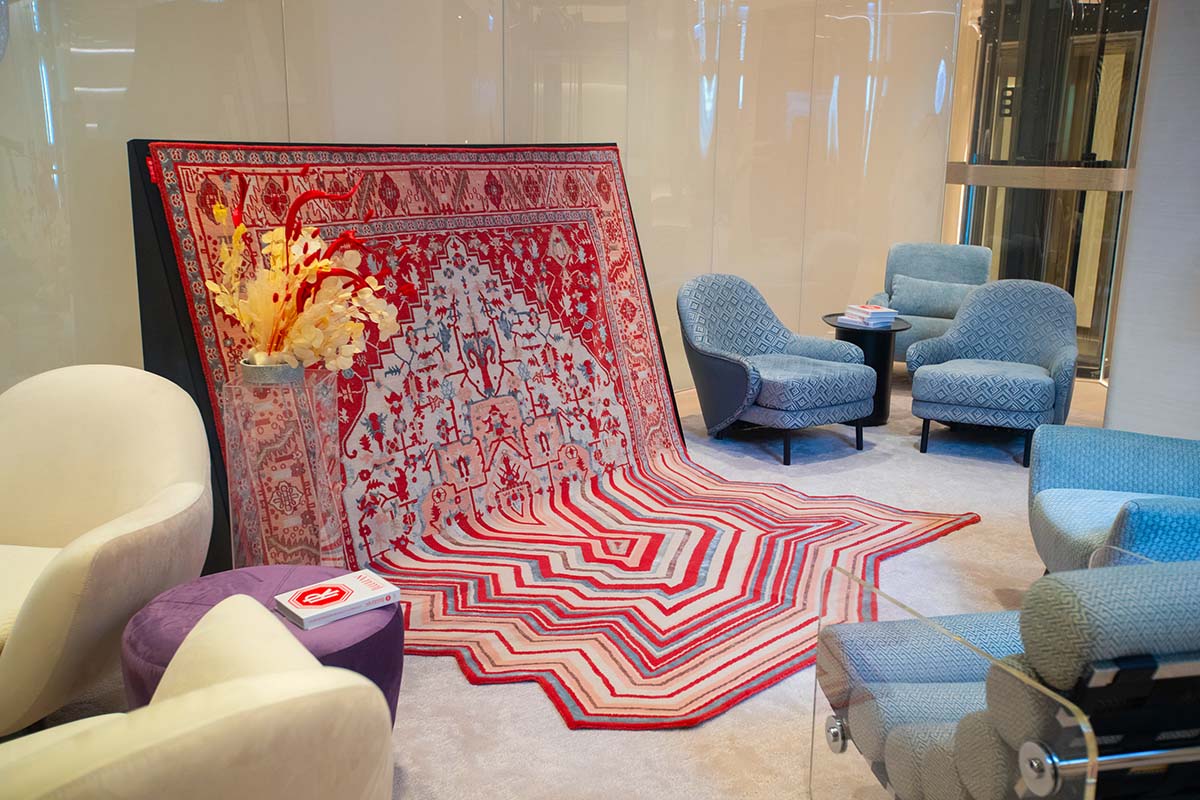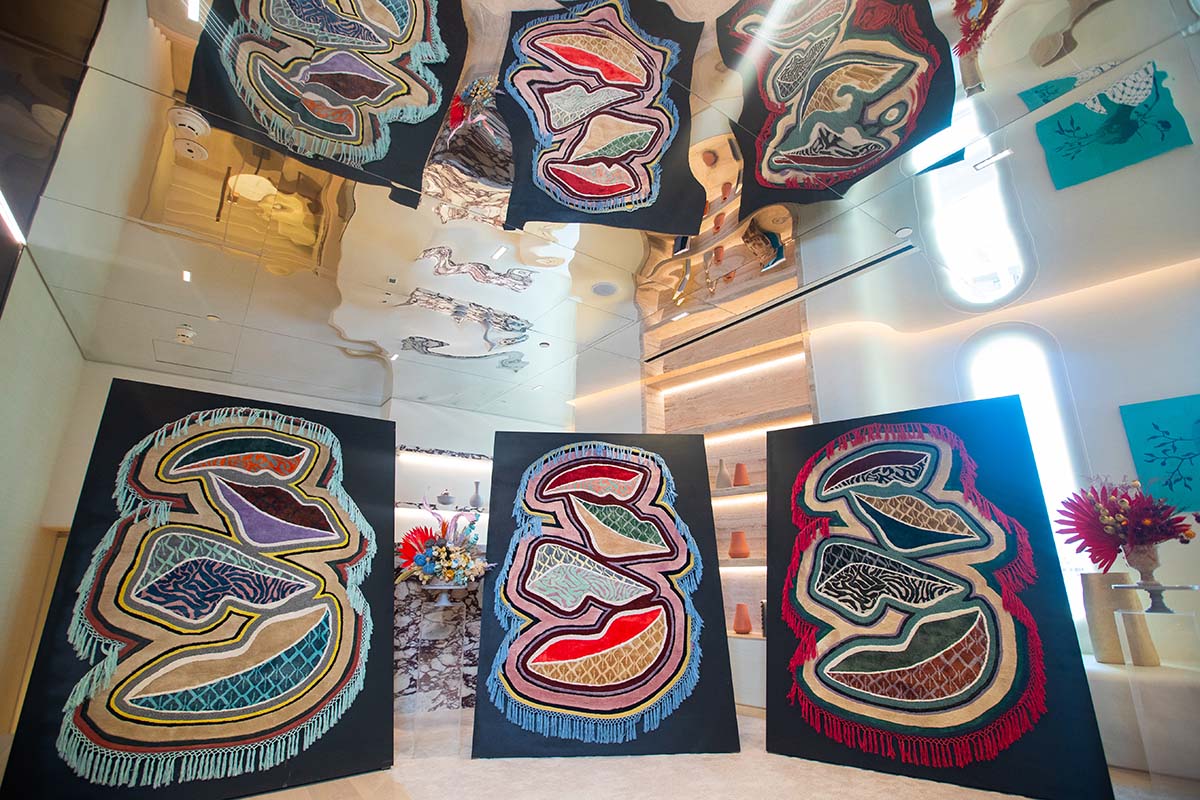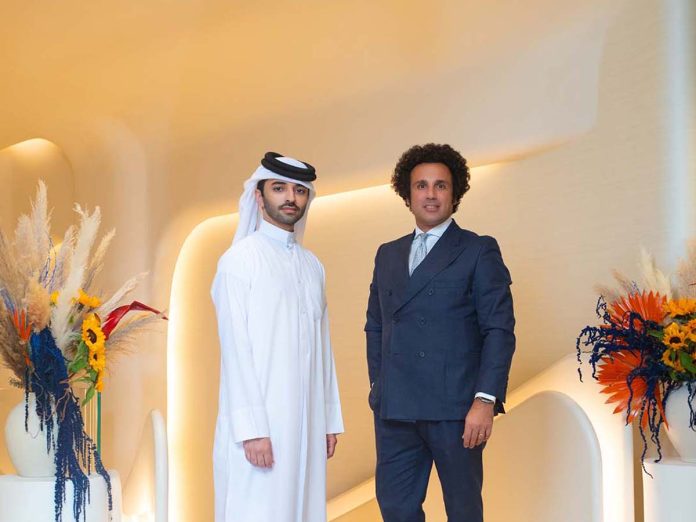Last December you organized a big event in Doha, Qatar, which opened many doors for you. How did it go?
It all started with one of our carpets that Sheikh Abdulaziz Al-Thani, a young man who loves design, saw on Instagram. He wrote to us – we’re talking about November 2023 – asking if we could send him some of our creations for an event he was planning to curate: he liked our way of expressing radically new content while keeping the link to traditional craftsmanship intact. His family is important: his uncle is the king of the country, and his aunt Mozah bint Nasser al-Missned is the person who wanted to create the Doha Design District, where there are showrooms of the most important brands and a museum, M7, that has been able to involve people like Rossana Orlandi. The Sheikh made his choice and we delivered the pieces, without contracts or anything else. On mutual trust. The event lasted three days: the first for royalty, princes and their families, the second for architects and insiders, and the last day – again by invitation – for a wider audience. We exhibited in a members-only club, with a setup designed in collaboration with Studio Fosc (Spanish, but also with offices in Doha), with a florist who designed an ad hoc arrangement for each installation.

The results?
Everything went very well. In the end, I didn’t want to leave without having a permanent space to display my product. And Al-Thani told me, “You choose where you want to be”. In the previous days I had looked around a bit and chose a large multi-brand, Al Mana Maples, where I left three pieces, one by Zaha Hadid and two by Paula Cademartori. From there, I went to Miami (a 16-hour flight!) where, on the occasion of Art Basel Miami, we organized an event together with Istituto Marangoni in Miami: a competition in which we asked forty students to design a rug, which was won by a Colombian girl who received a $10,000 scholarship. We presented a larger version of this rug, Paraiso, at the Salone. Meanwhile, other channels of collaboration opened up with Al-Thani.

Can you tell us about it?
For the jeweler David Webb, a historic New York house now controlled by the Al-Thani family, we are creating a rug that reinterprets one of their iconic pieces. Then, again through the young Sheikh, we are doing designs for boats, related to their culture, but with modern interiors. And then there is a project in the pipeline for the Printemps department store in Paris (also owned by them). We are surprised by the opportunities this person can give us. We decided to invest in these projects: the one for David Webb, for example, is a very interesting form of advertising for us. And they believe in us. Then other situations can arise. For example, now they’ve asked us to make a carpet, just one, for a hotel that has seventy rooms: it’s up to me to decide whether I believe in such a project and to make a contract price. You have to be able to see the potential.

What makes this region special?
The fact that people are traveling more today, they see so many foreigners coming to their country: they are curious, they are starting to break away a little from the traditional. There’s a lot of demand for talent, so a lot of designers are making arrangements to work here. This is a clientele that wants designed & made in Italy, but also maximum customization. One interesting thing is that in many projects there is a room that they keep very formal and close to the traditional, the majlis (meeting room). We went to Casablanca – which is not geographically close, but culturally it is – and in a super modern house we saw a room with small tables, rugs, poufs, etc., all in their style. This is also the case in Saudi Arabia, very often there are antique pieces on the ground floor and the rest of the house is contemporary.

Is there a local creative scene?
Sure. We get a lot of requests from designers in the region. Like Mattar bin Lahej, who is very famous, the one who designed the exterior of the Museum of the Future in Dubai: he did a carpet with us called Love, “habun” in Arabic (the only word I know in that language). We travel a lot: it’s always interesting to meet someone who has something different to say.
Do you have any plans for the future in this area?
Yes, we do. We are going to exhibit our rugs in a gallery in Riyadh; we have sent an architect to study the space. It will be a very important context, also in terms of size. It will be a direct thing, run by us and not by retailers: we have a nice network in the area, with corners in different stores: two in Dubai (a third is coming), two in Oman, two also in Jordan, although it is a very small country; we are about to sign in Beirut as well. But operating in person will be quite a challenge.









